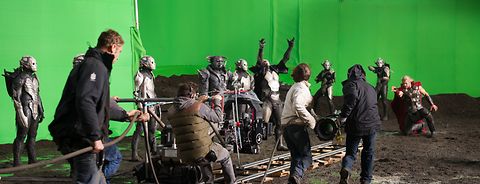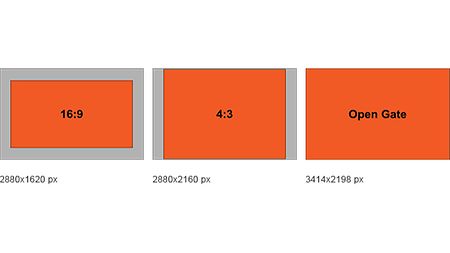Our cameras offer three different encodings of the recorded image:
- Linear encoding
- Logarithmic encoding
- Display-ready video encoding for Rec 709 monitors.
While ARRIRAW is encoded as linear data, it can be converted to the other two encodings using the ARRI Reference Tool, ARRIRAW Converter (legacy) or 3rd party applications which support ARRIRAW. For ProRes clips, the encoding can be logarithmic or video (not available on ALEXA Mini LF or later).
ARRI also offers Transformation-LUTs to convert from the different encodings back and forth. This can not be done without loss of data. For instance when recording a clip in Rec 709 encoding to ProRes files, these files can be converted Log C, but will have lost detail in blacks and whites.
Linear Encoded Data
Linear data is mostly used in VFX processing because it is the natural encoding for computer generated elements. The well-known ALEV3 senso for example has a dynamic range of 14+ stops which corresponds to a linear range of more than 15,000:1. In most cases floating point numbers are used to store this range (the OpenEXR image format, for example, is based on 16 bit floating point numbers).
Linear from ARRIRAW files
The most direct way to linear files is to record ARRIRAW and to process the data with the ARRI Reference Tool (ART)/ARRIRAW Converter (ARC). Third party software vendors also support ARRIRAW in their systems.
Linear from Log C files
Another way to obtain linear data is to undo the Log C curve of images recorded in QuickTime ProRes 4444, ProRes 4444XQ files.
ARRI's online LUT Generator can create LUTs to convert LogC3 images to linear sensor data. When the LogC3 data is converted to linear sensor data, black (corresponding to zero exposure) will be represented by the value 256/65535. This sensor black level is the mean of all pixels. Because of read-out noise, single pixels may be above or below this value. The standard deviation of the read out noise is approximately 2.5 meaning that the offset of 256 is more than high enough to encode the full noise amplitude (usually one assumes a range of three times the standard deviation or ± 8 code values). Using the parameters for linear scene exposure will map the black value, as expected, to 0.0. With the noise, however, single pixels will come out as negative values. When those values cannot be preserved and one does not want to clip them, a small offset of 8/65535 should be added to the relative scene exposure factor. This is equivalent of adding flare to the image data. The amount of flare expressed relative to the scene white will vary with the exposure index. It ranges from 0.1% (for EI 200) to 0.8% (for EI 3200). The flare should be subtracted before the images are converted back to LogC3.
Logarithmic Encoded Data
The Log C curve was first introduced with the ARRIFLEX D-20 camera. It's an encoding with a transfer characteristic similar to that of a scan from negative film. Because of the fundamental differences between digital cameras and negatives, however, the color characteristics remain different.
Display-Ready Video Encoding for Rec 2020/709 Monitors
The Rec 2020 or Rec 709 output of the camera is either used for on-set preview or for when the program is edited for television without extensive color correction. Those images are displayed without any further transformation. While this simplifies the post production workflow it reduces the possibilities in color correction. The images have been tone-mapped and transformed into the target color space.
The tone-map curve is applied to the Log C data. This transform is also available as a LUT for post-processing of Log C footage. While this provides a nice image on a video monitor, it also means that some information has been "squeezed out" of the transformed image. The matrix transform applied immediately following the tone-map curve results in an image transcoded into the target color space, but if the original image contained extremely saturated colors, this may also bring a loss of color. If a transformed color is outside the gamut of the display, it will be mapped or clipped to an in-gamut color.

